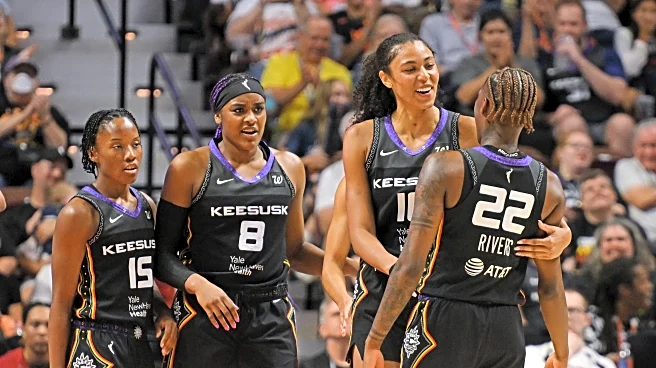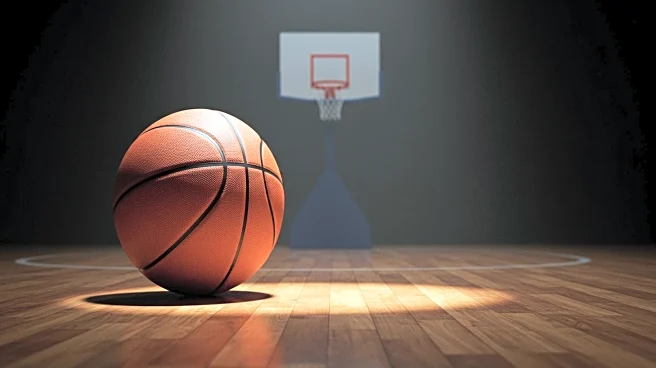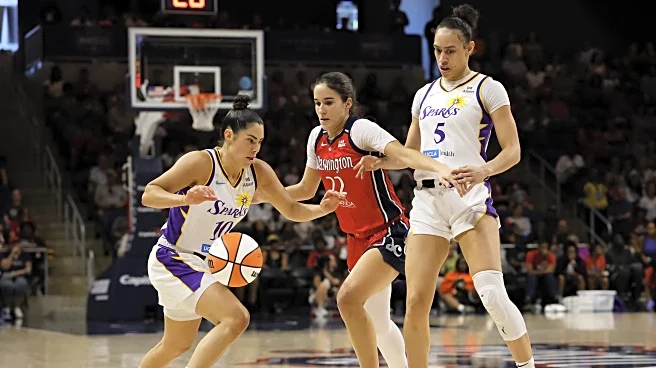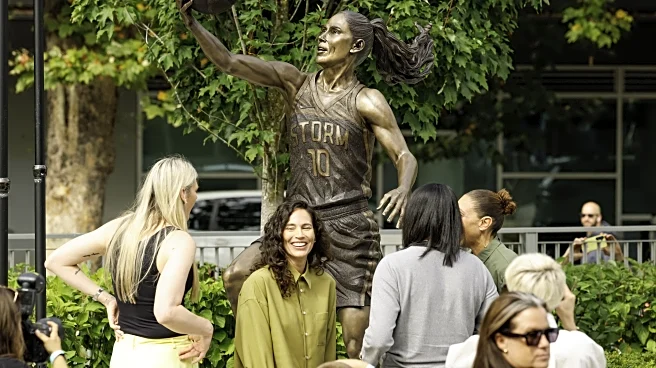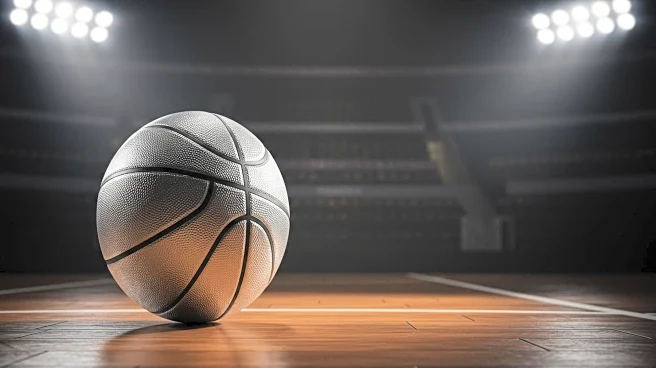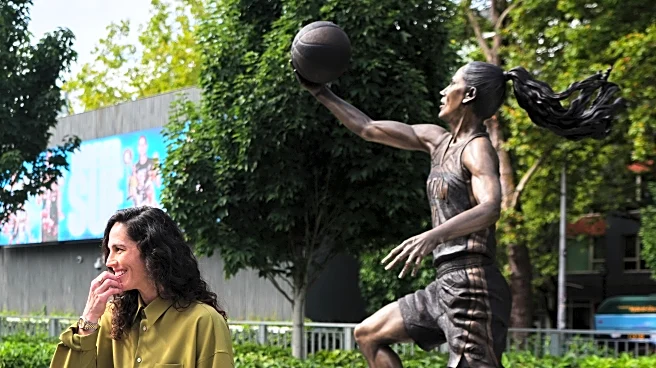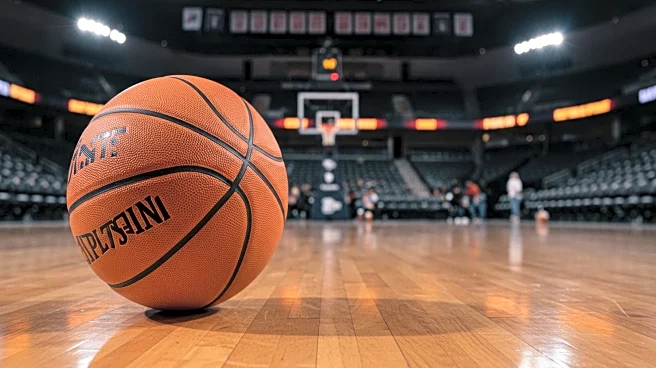
In the spring of 1997, for the first time ever, collegiate women’s basketball players had professional options. The Women’s Professional Basketball League had folded in 1981, but the American Basketball League launched in the fall of 1996, and the NBA had announced the WNBA would debut in the summer.
That announcement of the WNBA was exciting for everyone except, perhaps, the athletes of the ABL, who weren’t sure how the new league would impact them, or if it would at all. Those athletes also may
not have been able to predict the degree to which the WNBA would upend and reshape women’s basketball completely—or even how the new league might impact their own mental health.
Playing in the ABL was “exciting,” retired basketball player Val Whiting told Swish Appeal by phone last week. Whiting, who graduated from Stanford and intended to pursue medical school before postponing her plans in pursuit of her long-term basketball dreams, was recruited alongside teammate Jennifer Azzi to the San Jose Lasers (owned by Joe Lacob, present owner of both the Golden State Warriors and the Golden State Valkyries). The duo were the team’s “anchor players,” Whiting explained, and didn’t have to try out or be drafted into the league. The team “had good crowds,” all though nothing close to what the Valkyries have achieved this year, having sold out every home game and averaged 18,064 fans per game this season, but more than you might expect. (SFGate reported in 1998 the team brought in an average of 10,000 fans per game during its first season, a number that eventually dropped to a respectable 7,500.)

Whiting was traded to the Seattle Reign just as the WNBA released a series of commercials, all trumpeting the same proclamation—a harbinger of doom or of something exciting, depending on your allegiances and circumstances. The “We Got Next” campaign of 1996 was met with enthusiasm by large swaths of the women’s basketball community, but also felt like a threat to the players of the ABL, who weren’t sure where they’d fit in.
The ABL fought back—at first. “The WNBA would say, ‘We got next,’ and the ABL would say, ‘Well, we got players,’” Whiting laughed. But the WNBA had the backing of the NBA, and as much as that dynamic is being reexamined in 2025 as the league’s players renegotiate their collective bargaining agreement (CBA) ahead of next season, in the late 1990s it was too strong a force to overcome. The ABL folded, and, just like that, “We all went to the WNBA,” Whiting said. At least around 30 players from the ABL did, as the WNBA’s terms put a hard cap on ABL players allowed in.
Whiting’s experience with the WNBA is one she still re-examines to this day. The WNBA’s relationship with the NBA gave the newbie league something the ABL could never grab on to: television contracts with networks, which guaranteed success. As Whiting put it, “What sports league can survive without a TV contract?”
Whiting headed east to the Detroit Shock as the No. 17 overall pick in the 1999 draft. The move was a complicated one; Whiting faced mental health struggles and ended up on and off the team’s injury reserve list due to depression. As a result, she doesn’t “have the best memories” of her time in the city. “I didn’t have the tools to combat how I was feeling, in regard to performance anxiety, losing my confidence and bouncing back from mistakes” she explained, “and I ended up spiraling.”

For Whiting, spiraling meant isolation, and it meant completely avoiding opening up to others about what she faced. Officially, she was out due to “personal reasons”—that oft bandied catchphrase that never quite explains anything. Unofficially, she was up against a wall with no perceivable way to get around, over, or through it.
Whiting lived that way for years until, spurred by the COVID-19 pandemic, she, like so many others, joined TikTok and uploaded a video about mental health. That video sparked conversation, and Whiting began to realize she has something to say that can help others and, crucially, the ability to communicate it. “I know that when I played, I had no support,” Whiting explained. Her coach, perhaps lacking the appropriate resources themselves, labeled her “unmotivated.”
Walking that road alone became so dark that Whiting was hospitalized twice nearly 15 years ago. “I didn’t get the help I needed. I just let things go until it was too late, and then I was suicidal,” she added, an audible drop to her voice. Whiting gathered herself. “I just don’t want athletes or people to suffer in silence, and I want them to get the help they need—whether it’s with me or with someone else,” she said.
Whiting put together a TikTok video on the topic one day, and “that’s when a lot of other players, other young athletes, reached out about what I was doing. And I mean, they reached out about my experience and resonated with it.”
Whiting currently operates in somewhat of a gray area within the world of mental health, but it’s one that athletes, and perhaps more specifically, young athletes, benefit from the most. Whiting acts as a mental performance coach and helps “athletes get from where they are now to where they want to be in the next level.” (She’s also clear that these challenges aren’t unique to young women: “I’m a mom of two boys,” Whiting said, “so I see boys go through this as well.”)
Her experience is vast, and when she doesn’t feel qualified to guide an athlete down their own mental health journey, Whiting doesn’t hesitate to find someone who can. She works at the collegiate and professional athlete level, but also with kids who are just beginning their own athletic journeys; middle and high school students are among those who most often need someone like Whiting in their corner.
That our youngest athletes are struggling at rates of depression and other mental health challenges that are comparative to their older counterparts isn’t entirely new information. A 2023 study by Tavish Ward, Thor Stead, Rohan Mangal and Latha Ganti found that of 200 athletes between ages 16 and 17 the group anonymously surveyed, a massive 91 percent reported experiencing “some level of stress due to sports” and cited fear of failure and self-pressure as their most frequent points of stress.
“In 2025, coaches are still like, ‘We’re fine,’” Whiting said of the prevailing approach to mental health support in youth athletics. “[It’s] ‘We’ll just run them harder’ instead of ‘Let’s give them the tools, so that when things get tough, they know how to combat and how to react to [mental health challenges].’”
When it comes down to it, “I didn’t have those skills,” she concluded. There’s no way to know what might have been if she had, and, spurred by a calling that dims even her elite basketball career, Whiting is determined to make things better for as many athletes as she can.


